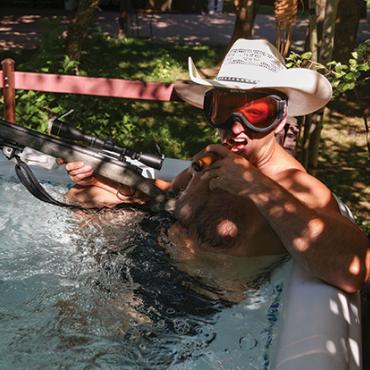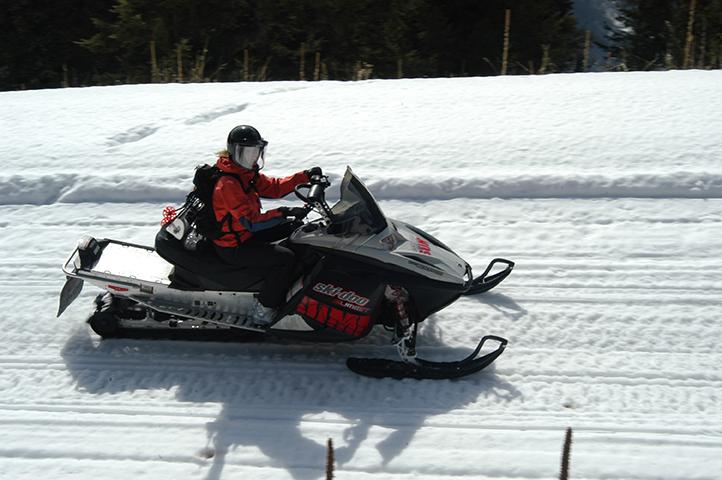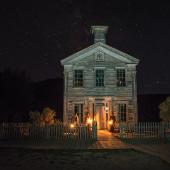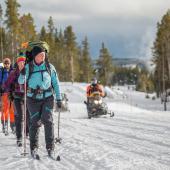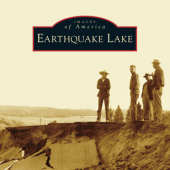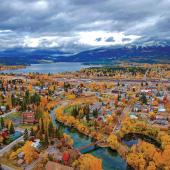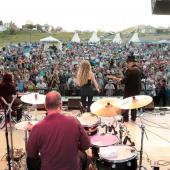The White Season In West
Wintertime in West Yellowstone is about as pure a representation of the historic Rocky Mountain West as you can get. Roadside snowdrifts higher than your car; sprawling pine forests and picturesque alpine meadows; rustic mountain lodges surrounded by snow-covered glades and gurgling streams; quaint storefronts and hearty steak dinners; and all around, woodstove smoke rising into the cold alpine air—these are the images that make “West” feel like it’s still part of the frontier. And that’s what keeps us coming back, year after year, to enjoy a weekend or longer in one of the Treasure State’s oldest and most beloved towns.
To be sure, the snowmobile controversy of the last few years has brought change to the West Yellowstone community. But it’s also brought loads of misinformation, from fallacious reports of Yellowstone Park closures to hyperbolic declarations that the town itself is doomed. Hogwash. Change may be in the air in West, but there’s no reason to stay away this winter. In fact, this just may be the best time to go. Overblown media reports and a natural tendency toward overreaction have caused many to cancel their vacation plans—which means more snowcoach, snowmobiling, and cross-country-skiing fun for the rest of us.
History
In the late 1800s, a trip into Yellowstone Park was usually by horseback or wagon and required extensive planning and resources. Therefore, visitation to the tiny, unnamed community at the Park’s western gate was limited to a few hardy souls from nearby territories. The arrival of the stagecoach made the trip more tolerable and visitation began to increase. Eventually, the need for a railroad line became evident. In 1905, an extension of the Oregon Short Line from Ashton, Idaho began, and by the summer of 1908, the first train of visitors arrived at the west entrance on Union Pacific’s “Yellowstone Special.” The town of West Yellowstone sprang up that summer.
The advent of the automobile caused the pace of life in West Yellowstone to increase, and throughout the ensuing decades the town site grew rapidly. With more and more people arriving each summer, new stores and lodges appeared regularly. A temporary slowdown occurred during World War II; but once the war and gas-rationing ended, the town boomed once again. Automobiles soon became the primary mode of transport for West Yellowstone visitors, and after years on the decline, the rail line to West finally shut down.
Yellowstone Park opened officially for the winter in 1971, ushering in the modern era of snowmobiles, snowcoaches, and cross-country skiing. Today, the “white season” in West Yellowstone is almost as popular, and just as important to the local economy, as the summer.
Activities
In terms of recreation, diversity is probably West Yellowstone’s greatest strength. Outdoor enthusiasts of all flavors find enthusiastic outlet at “the hub of Yellowstone Country.” Self-propelled stylists can strap on skis and explore hundreds of miles of trails, both in the Park and in the surrounding national forest. On the south edge of town, the Rendezvous Trail system offers 30k of groomed trails for both classic and skate-skiing disciplines. This world-renowned trail network hosts many regional and national competitions, including the Yellowstone Rendezvous ski race, one of the town’s biggest winter draws. Snowshoeing is another great way to get out and see the surrounding countryside; rentals and maps are available at local shops. West also maintains an ice rink, so bring your skates along too.
West Yellowstone isn’t known as the snowmobiling capital of the world for nothing—and as of yet, there’s no reason to retract that appellation. Contrary to many reports, snowmobiles are still permitted in the Park, and are still a major part of life in West Yellowstone. Guides are now required when snowmobiling in Yellowstone, but other than that, not much has changed. You can still ride to Old Faithful and the Norris Geyser Basin, watching herds of buffalo and elk along the way. What many people don’t know is that there are hundreds of miles of trails and open terrain outside the Park as well—and no guide is required. This area offers some of the best, most secluded snowmobiling in the country. Many riders like to spend a leisurely day in the Park watching geysers and wildlife, and another, more aggressive day of powder-riding in the Two Top or Lionshead areas outside of West.
By far the fastest-growing activity in West Yellowstone, snowcoach rides offer yet another way to experience the winter wonderland of Yellowstone Park. Snowcoaches range in size and shape, from Bombardier-style classics to modern vans with specially-designed track conversions. Whatever the style, snowcoaches allow multiple people to travel together in comfort, staying warm on the coldest of days while receiving on-the-fly naturalist and historical commentary from experienced local guides. For this reason, snowcoaches are becoming increasingly popular with families and for company outings. Snowcoach rides are also cheaper than renting a snowmobile, and many people enjoy the higher perch for superior wildlife-watching. Most outfits in town will let you bring skis along, so you can take a short ski tour through the thermal features around Old Faithful before jumping aboard the snowcoach for the ride back to West.
West Yellowstone also makes a great base camp for daytrips and overnight forays into the surrounding area. Downhill skiing at Big Sky Resort and Moonlight Basin is just a 45-minute drive to the north, while Jackson Hole and Grand Targhee are less than two hours to the southeast. Backcountry skiing abounds in the nearby mountains. If you’re worn out and need a day of milling about, head into Idaho Falls, just a couple hours’ drive to the south.
Indoors
Don’t think you have to spend every waking moment outside—there are numerous indoor activities around West to keep you busy when your legs are sore from skiing or when it’s just too darn cold to go outside. The Grizzly & Wolf Discovery Center has live bears and wolves as well as educational exhibits, naturalist presentations, and a well-stocked gift shop. The Yellowstone IMAX features a six-story screen and 12,000 watts of surround-sound. Try the feature film Yellowstone as an introduction to your excursion into the Park, or check out one of the other fascinating IMAX films that play throughout the winter. Musical comedies play six nights a week at the Playmill Theatre, the area’s only live playhouse. A new museum, scores of restaurants and cafés, and various shops round out the indoor experience in West.
Future
Whatever the future holds for West Yellowstone—from snowmobiles to snowcoaches, monorails to paved roads and busses—one thing’s for sure: the town that sprang up in 1908 will still be there in 2008, and in the years and decades thereafter. Its proximity not just to Yellowstone but also to tens of thousands of acres of prime national forest land will always draw visitors from far and wide. And whether the season is warm or cold, green or white, West Yellowstone will always celebrate its role as a gateway to Yellowstone National Park.
For more information about West Yellowstone, including info about lodging and activities, contact the West Yellowstone Chamber of Commerce at 406-646-7701.

